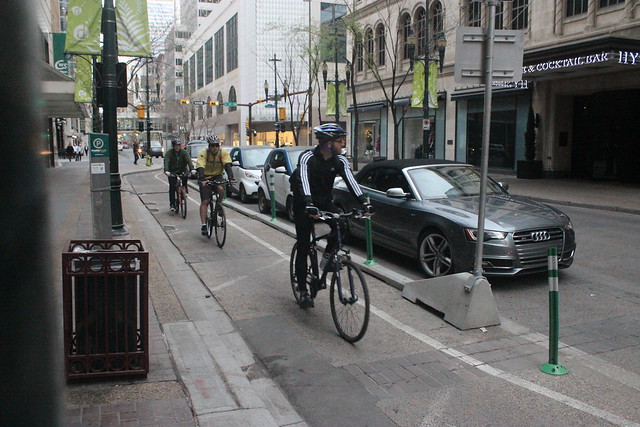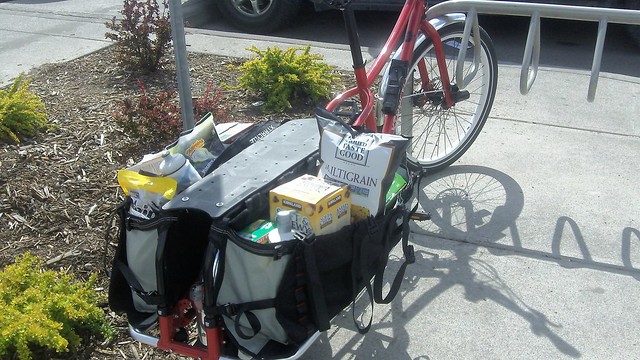“Big grocery.”
That is a slightly tongue-in-cheek suggestion about how to make cities more bike friendly by Ontarian Lana Stewart, who speaks and writes thoughtfully about the fixation of urban cycling advocates on commuters, despite statistics showing that a huge percentage of car trips are elsewhere, such as running errands, shuffling kids to activities and, yes, getting groceries.
In the shadow of “big commute,” she suggests more attention be given to “big grocery.”
Stewart’s is a rather colourful way of drawing attention to the fact that suburbs often get overlooked in discussions about urban cycling. This has deeper ramifications than just inconvenience. In the changing nature of cities, suburbanites are often home to people who can’t afford inner-city living, which means those who could most benefit from improvements to cycling (one of the more affordable transportation modes available), are often left out of the conversation.
 Darnel Harris, another Ontario advocate, takes the argument even farther, saying those who live in the suburbs can be marginalized by bike infrastructure in a couple of ways. Conversations about urban cycling often denigrate the ‘burbs, making people feel shame in their communities. And bike lanes often are precursors (or symptoms of) gentrification, which can push low-income residents out of their own neighbourhoods. There have even been protestations against bike lanes in some communities, based not on the usual anti-bike ignorance, but from those afraid that bike lanes will drive out the poor.
Darnel Harris, another Ontario advocate, takes the argument even farther, saying those who live in the suburbs can be marginalized by bike infrastructure in a couple of ways. Conversations about urban cycling often denigrate the ‘burbs, making people feel shame in their communities. And bike lanes often are precursors (or symptoms of) gentrification, which can push low-income residents out of their own neighbourhoods. There have even been protestations against bike lanes in some communities, based not on the usual anti-bike ignorance, but from those afraid that bike lanes will drive out the poor.
This is a horrific situation considering affordability should be one of the key benefits of using a bike. In fact, one of the great success stories of urban cycling is the way bike lanes help better integrate poor residents into cities. Urban cycling hero Enrique Penalosa, former mayor of Bogota, Colombia, once said that bike lanes show that “a citizen on a $30 bicycle is equally important to one in a $30,000 car.”
There’s no easy to solution to all of this. Retrofitting suburbs to be more friendly to active transportation in a way that doesn’t lead to gentrification would be the ultimate answer, but it’s expensive, slow and difficult. But there are some other good ideas circulating. Harris, for one, is pushing a project to bring cargo bikes to the ‘burbs, based on the idea that people will be better able to capitalize on their utilitarian nature without having to wait for expensive infrastructure improvements that could change their neighbourhood.
It’s an intriguing idea, and at least gets the conversation started on ways of becoming more inclusive while those long-term retrofits finally make their way outside of expensive urban areas.
